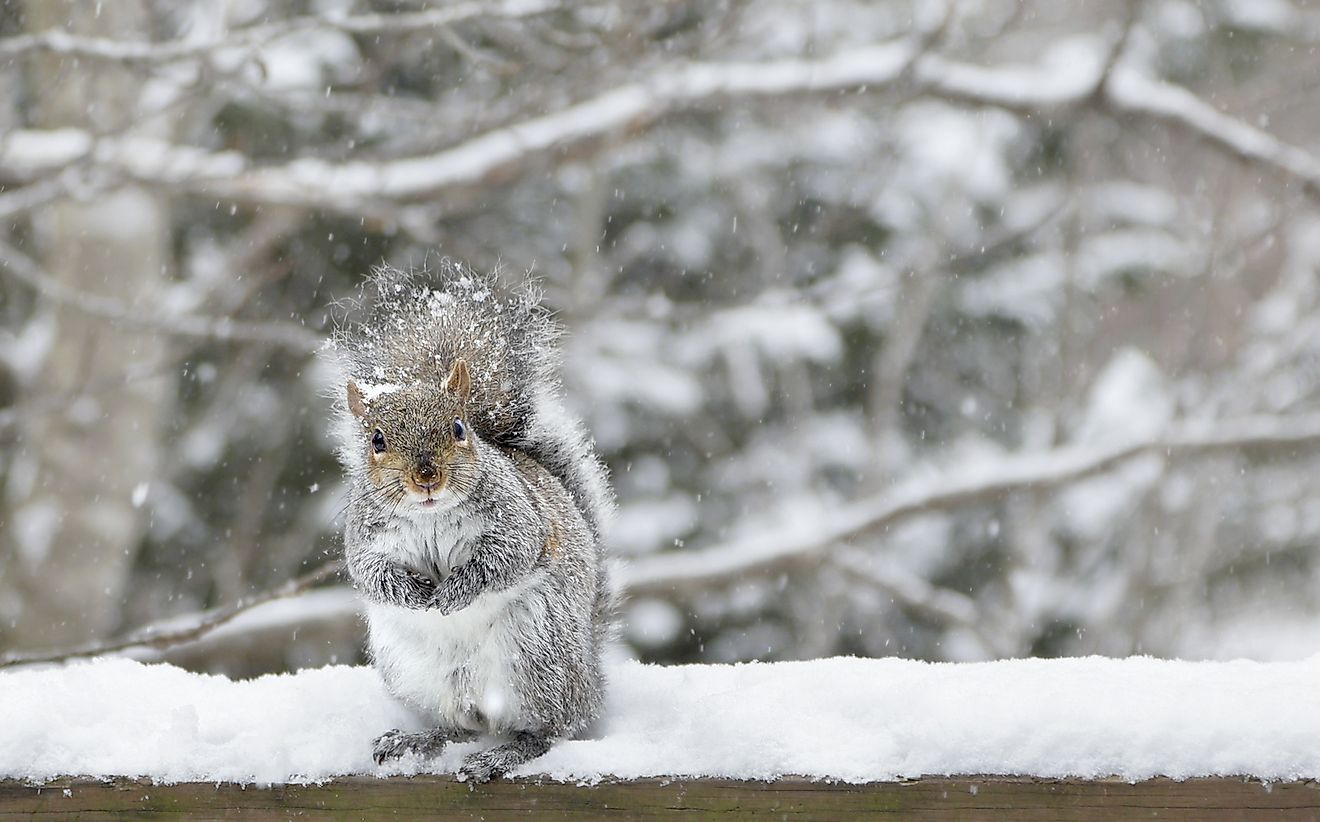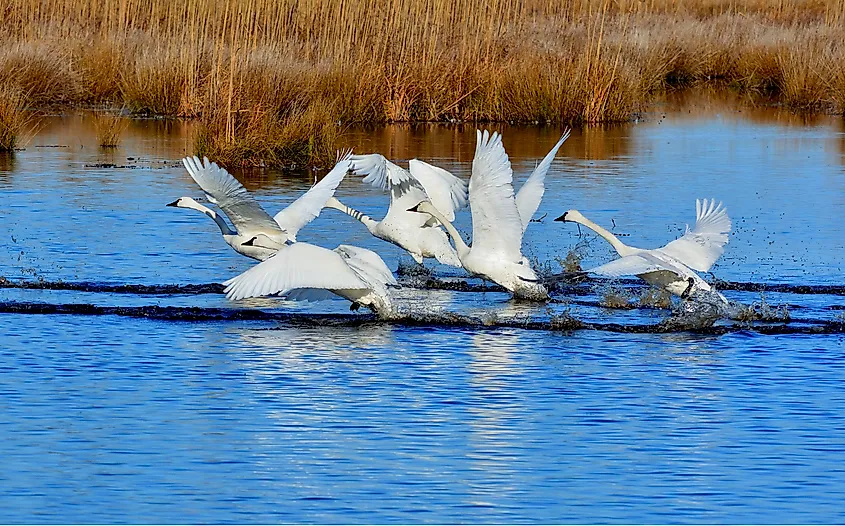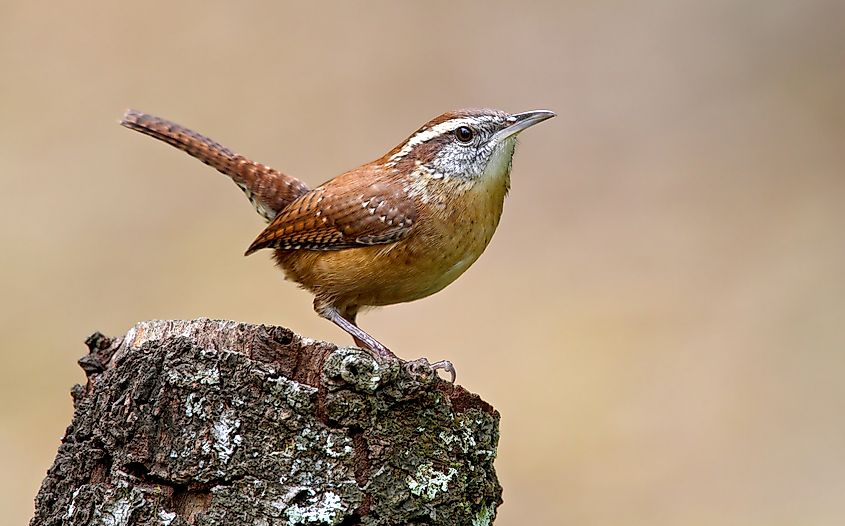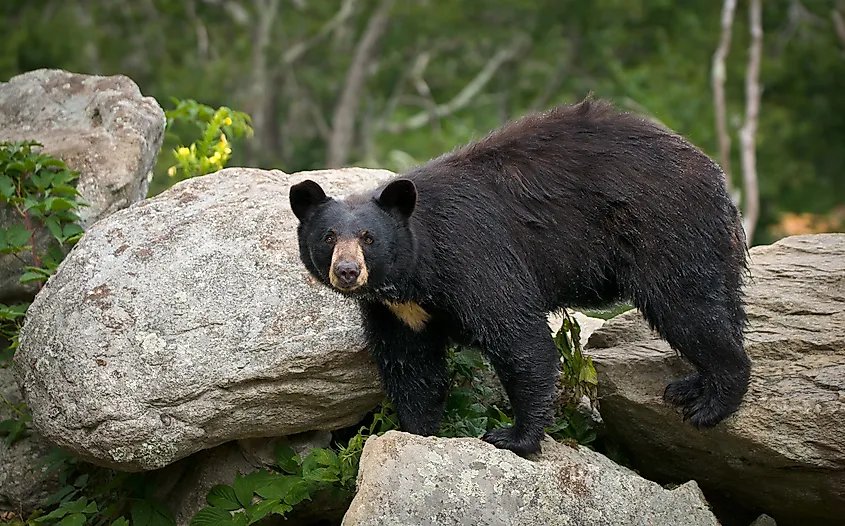What Wild Animals Are In North Carolina
What Animals Live In Northward Carolina?

- Due north Carolina is dwelling house to 121 mammal species, 475 wild birds, 234 freshwater fish species, 91 amphibians and 71 known species of reptiles.
- Animals such as the Carolina northern flight squirrel, Eastern cougar, and Indiana Bat are federally listed as endangered
- Northward Carolina provides a wide range of wildlife habitats from mountains to coastline making it dwelling house to some diverse animal species
North Carolina is known for a few dissimilar things: its large product of sweet potatoes, high waterfalls, the Appalachian Mountains, and magnificent beaches. Likewise all these, North Carolina is besides domicile to some unique animal species. Some of these animals are native to the state whereas others are just pop just not native to it equally discussed below;
The Eastern Gray Squirrel
Scientifically known as Sciurus carolinensis, the eastern gray squirrel is the country mammal of Due north Carolina. It was declared country mammal in 1969 due to its high population in the state. These squirrels inhabit most parts of the State of Carolina especially the hardwood forests, suburban woodlands, and modest parks. They are omnivorous, arboreal, and diurnal diurnals. Some of their predators include humans, hawks, foxes, owls, weasels, and dogs. Regarding their conservation condition, the eastern gray squirrels are of Least Business concern. The eastern Gray Squirrels were hunted for nutrient during the American Revolution and War of 1812.
Cape Fearfulness Shiner
Scientifically known equally Notropis mekistocholas, the Cape Fright Shiner is a minor and xanthous fish that possesses black lips. Some other characteristic feature of the fish is a black line that runs from the head downwardly to its dorsal fin. The Cape Fear Shiner feeds on algae, bacteria, diatoms, phytoplankton, and detritus. Consequently, its intestines are adapted to digest plants. These fish are endemic to the central regions of Northward Carolina. Still, they tin can only be institute in the Cape Fearfulness River basin. Cape Fear Shiner is critically endangered due to threats to its habitat such every bit pollution and dam construction by humans.
Indiana Bat
Scientifically known as Myotis sodalist, the Indiana bat is merely found in Northward American states such equally North Carolina, Iowa, Missouri, New Hampshire, and Vermont among others. They inhabit temperate and terrestrial regions. Indiana bat has soft fur and is deep gray or dark-brown in color. Information technology weighs upward to 7 grams and measures 35-41 mm in length. These bats are polygamous meaning that one male mates with several females during reproduction. The life span of Indiana bats is fifteen-20 years. According to the IUCN Red Listing, the bats are endangered mostly due to habitat loss.
Cottonmouth Snake
The Cottonmouth is the about dangerous snake in N Carolina as its venom is even more dangerous than that of the copperhead. It mostly inhabits the eastern parts of Northward Carolina in areas such as the lakes, rivers, and swamps. Scientifically known as Agkistrodon piscivorus, the cottonmouth is semi-aquatic and swims with its head above the water. It is for this reason that the snake is also called the Water Moccasin. Regarding its conservation status, cottonmouth is of Least Concern.
Tundra Swan

The Tundra Swan is scientifically known as Cygnus columbianus. The swans are elegant, slender cervix, and possess all-white feathers. They also have black bills, black feet, and weigh up to 14.iv pounds. Although the tundra swans breed in Canada's arctic coastal plains and and so move to the United states of america coasts such every bit in North Carolina during wintertime. Their survival is threatened by human hunting, competition from the Mute swan, and destruction of aquatic plants. Tundra swans take been nicknamed the whistling swans due to their unique calls.
Sand Tiger Sharks
Sand tiger sharks are the largest and most potentially dangerous sharks found in the coastal waters of Due north Carolina. They grow 6-ten.5 feet lengthwise and may weigh up to 350 pounds. These sharks usually inhabit subtropical and temperate waters and feed on rays, smaller sharks, skates, and bony fish. Their populations vary throughout the year with May-Oct being a time when their numbers are quite high. Sand tiger sharks are categorized every bit Vulnerable by the IUCN Red List. They are scientifically known every bit Carcharias taurus.
Carolina Wren

Scientifically known as Thryothorus ludovicianus, the Carolina wren is endemic to the southeastern US which includes North and S Carolina. Information technology is the 2d largest wren in the US after the cactus wren. This bird weighs 0.63-0.81 pounds and exhibits slight sexual dimorphism as the males are relatively larger than the females. The Carolina wren lives in dense forest covers, suburban areas, and farm edges. They feed on grasshoppers, wasps, small lizards, tree bugs, beetles, bees, and seeds.
Eastern Diamondback Rattlesnake
The eastern diamondback rattlesnake is scientifically known as Crotalus adamanteus. Information technology is found in the North Carolina coastal plains. This type of rattlesnake is the heaviest snake in the Americas, besides as the largest rattlesnake in the country. It is an excellent swimmer, terrestrial, and may live for approximately 15-20 years. Most times when it is threatened, the venomous eastern diamondback rattlesnake shakes the rattle on its tail. According to the IUCN Ruby List, the conservation status of the serpent is To the lowest degree Concern.
Oak Toad
Scientifically known as Anaxyrus quercicus, the oak toad is amongst the smallest species of toads in America. It is only 19-33 mm long and is found in the coastal regions of Northward Carolina. The toad has brown or blackness spots on its trunk, as well equally a dorsal stripe. Information technology is diurnal which means that it stays awake during the solar day. Oak toads lay 300-500 eggs in shallow pools during the convenance season. The hatching period of the eggs is 24-36 hours. Regarding their conservation status, the oak toads are of Least Concern.
Black Bear

Black bears are the only bear species establish in Due north Carolina. They weigh 300 pounds and are active tree climbers. Scientifically known as Ursus americanus, these bears live in large forested areas. In nearly cases, their being is threatened by habitat loss and hunting by humans. Black bears take a ameliorate hearing sense and eyesight compared to that of humans. Additionally, their sense of aroma is 7 times that of a domestic canis familiaris. Black bears take a life span of 18-23 years.
Source: https://www.worldatlas.com/articles/north-carolina-animals.html
Posted by: walkerbegaid.blogspot.com

0 Response to "What Wild Animals Are In North Carolina"
Post a Comment